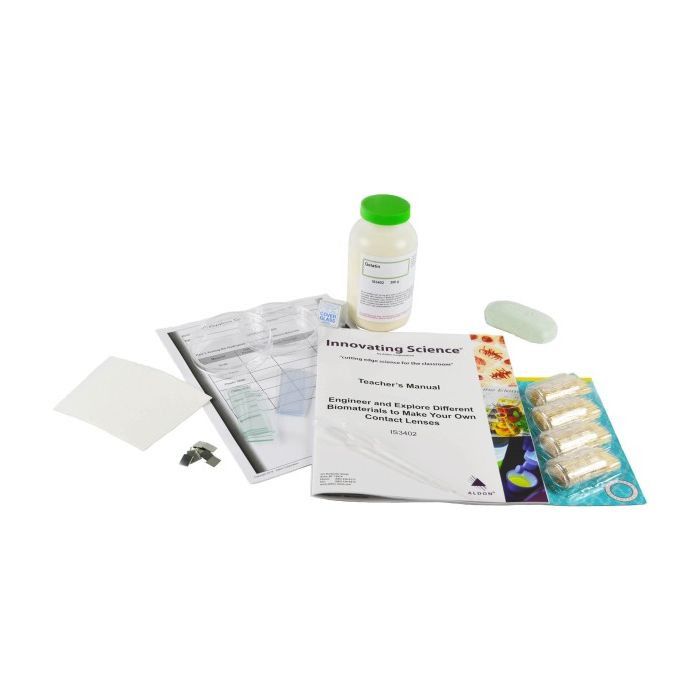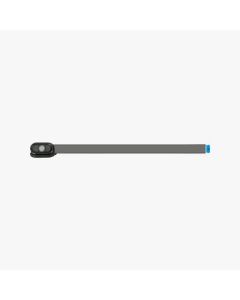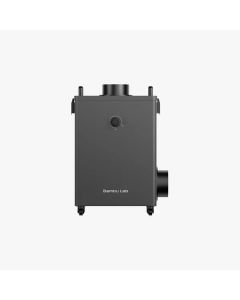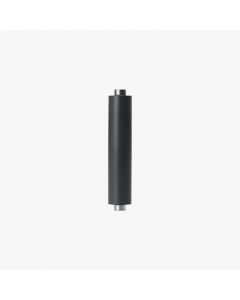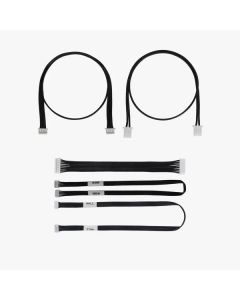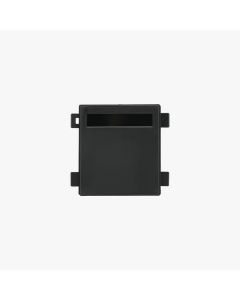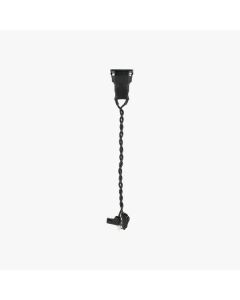We use cookies to make your experience better. To comply with the new e-Privacy directive, we need to ask for your consent to set the cookies. Learn more.
Innovating Science® - Biomaterials to Make Your Own Contact Lenses
Rating:
80 % of 100
$86.00
Chemical products can only be purchased by Corporations and Educational Institutions. Private Individuals are not eligible.
Chemical Products can not be shipped to residential addresses.
Manufacturer ID - IS3402
Students will learn about acids and bases through a class discussion and then test a dilute acid and dilute base with neutral litmus paper to learn how the paper indicates something is acidic or basic. Once that skill is learned they can move on to test some common items that would be found around their house to determine if they are acids or bases. Optional: Extra litmus paper is included to test more items either from home or around the school building for a greater understanding of acids and bases. The activity contains enough materials for 6 groups of students.
Description
Engineers play an integral role in the process of finding a "perfect" material or ratio of materials to maximize the desired properties and decrease the amount of negative effects of other properties. For example, when developing the perfect material for use in contacts, an engineer will have to test many different materials before finding the right one. Therefore, testing a hydrogel, which is favorable for all three of the main properties needed for a contact lens to function properly seems to be logical. A hydrogel is a polymer similar to plastic, which has favorable optical properties and favorable flexibility/strength but like paper and glasses/ceramics is hydrophilic, which is necessary for a contact lens to function properly. The main job of a biomedical engineer developing contact lenses today is to make a hydrogel and find the perfect "ratio" of polymer to water. The composition of the hydrogel needs to be hydrophilic enough to maintain a wet environment in the eye but not too hydrophilic so that the contact begins to swell and change size and shape. Students will engineer a lens using 2 different materials. They will determine the correct material and the concentration that has similar properties as a contact lens, while discovering the correct optical properties, tensile strength and hydrophobicity.
Aligned to the Next Generation Science Standards (NGSS)*
Disciplinary Core Ideas: ETS1.A; ETS1.B; ETS1.C; PS1.A
Performance Expectations: MS-ETS1-1; MS- ETS1-3; MS- ETS1-4; HS-PS1-3; HS-ETS1-2
Cross Cutting Concepts: Influence of Science, Engineering and Technology on Society and the Natural World; Patterns
Engineering Practices: Asking Questions and Defining Problems; Analyzing and Interpreting Data; Constructing Explanations and Designing Solutions; Planning and Carrying Out Investigations
Kit Includes:
300g Gelatin Powder
15 pieces Zinc Metal
15 Plastic Pipettes
45 Petri Dishes
100 Glass Cover Slips
15 pieces Chromatography Paper
15 Plastic Microscope Slides
15 Glass Microscope Slides
1pkg Toothpicks
1 bar Soap
DOT Info:
Non-regulated
*"Next Generation Science Standards" is a registered trademark of Achieve. Neither Achieve nor the lead states and partners that developed the Next Generation Science Standards was involved in the production of, and does not endorse, this product.
Aligned to the Next Generation Science Standards (NGSS)*
Disciplinary Core Ideas: ETS1.A; ETS1.B; ETS1.C; PS1.A
Performance Expectations: MS-ETS1-1; MS- ETS1-3; MS- ETS1-4; HS-PS1-3; HS-ETS1-2
Cross Cutting Concepts: Influence of Science, Engineering and Technology on Society and the Natural World; Patterns
Engineering Practices: Asking Questions and Defining Problems; Analyzing and Interpreting Data; Constructing Explanations and Designing Solutions; Planning and Carrying Out Investigations
Kit Includes:
300g Gelatin Powder
15 pieces Zinc Metal
15 Plastic Pipettes
45 Petri Dishes
100 Glass Cover Slips
15 pieces Chromatography Paper
15 Plastic Microscope Slides
15 Glass Microscope Slides
1pkg Toothpicks
1 bar Soap
DOT Info:
Non-regulated
*"Next Generation Science Standards" is a registered trademark of Achieve. Neither Achieve nor the lead states and partners that developed the Next Generation Science Standards was involved in the production of, and does not endorse, this product.
Specification
| Brand Name | Innovating Science® |
|---|---|
| Performance Expectations | 5-PS1-3 5-PS1-4 |
| Cross Cutting Concepts | Cause and Effect Scale, Proportion, and Quantity |
| Engineering Practices | Planning and Carrying Out Investigations |
| Box Used | 12663SBOX |
| Width (in) | 6.25 |
| Height (in) | 4 |
| Weight (oz) | 19.9 |
| Weight (lb) | 1.24 |
| Country of Origin | US |
| Harmonization Code | 9023.00.0000 |
| DOT Description | Non regulated |
Related items you may like
Customer Reviews
Be the first to review this product
0%
of customers recommend this product
5 Stars
4 Stars
3 Stars
2 Stars
1 Star
Write Your Own Review
Only registered users can write reviews. Please Sign in or create an account


